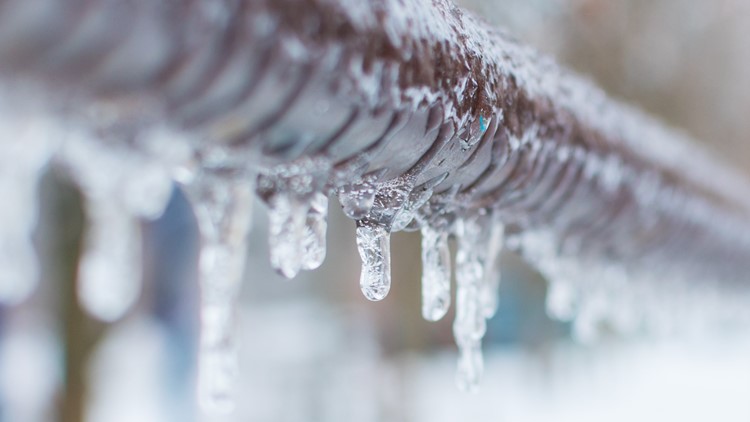Crucial Tips for Avoiding Frozen Pipes in Cold Weather Seasons
Crucial Tips for Avoiding Frozen Pipes in Cold Weather Seasons
Blog Article
Do you find yourself interested in insight concerning Preventing and dealing with frozen pipes?

Winter can wreak havoc on your pipes, especially by freezing pipelines. Below's exactly how to avoid it from occurring and what to do if it does.
Introduction
As temperature levels decline, the threat of icy pipes rises, potentially bring about costly repair work and water damages. Understanding exactly how to avoid icy pipelines is essential for house owners in cool environments.
Avoidance Tips
Shielding vulnerable pipes
Wrap pipelines in insulation sleeves or make use of warmth tape to shield them from freezing temperature levels. Concentrate on pipelines in unheated or outside areas of the home.
Heating strategies
Maintain interior spaces properly heated, specifically areas with plumbing. Open up cabinet doors to enable cozy air to flow around pipes under sinks.
How to recognize icy pipelines
Look for lowered water circulation from taps, uncommon smells or sounds from pipelines, and visible frost on revealed pipelines.
Long-Term Solutions
Architectural adjustments
Take into consideration rerouting pipes far from outside wall surfaces or unheated areas. Add added insulation to attic rooms, basements, and crawl spaces.
Upgrading insulation
Purchase top quality insulation for pipes, attic rooms, and wall surfaces. Correct insulation aids keep regular temperature levels and reduces the risk of frozen pipelines.
Protecting Exterior Pipes
Yard pipes and outside faucets
Disconnect and drain yard pipes before winter season. Install frost-proof faucets or cover outside faucets with shielded caps.
Comprehending Frozen Pipelines
What triggers pipelines to ice up?
Pipes ice up when exposed to temperature levels below 32 ° F (0 ° C) for expanded periods. As water inside the pipes ices up, it broadens, putting pressure on the pipeline wall surfaces and possibly causing them to rupture.
Dangers and problems
Frozen pipes can cause water supply disruptions, home damages, and pricey repair work. Burst pipelines can flood homes and cause substantial structural damages.
Signs of Frozen Water Lines
Recognizing icy pipes early can avoid them from breaking.
What to Do If Your Pipelines Freeze
Immediate actions to take
If you suspect frozen pipelines, maintain taps open up to alleviate pressure as the ice melts. Use a hairdryer or towels taken in warm water to thaw pipes slowly.
Conclusion
Preventing icy pipes requires aggressive steps and fast reactions. By understanding the reasons, signs, and preventive measures, homeowners can secure their pipes during winter.
5 Ways to Prevent Frozen Pipes
Drain Outdoor Faucets and Disconnect Hoses
First, close the shut-off valve that controls the flow of water in the pipe to your outdoor faucet. Then, head outside to disconnect and drain your hose and open the outdoor faucet to allow the water to completely drain out of the line. Turn off the faucet when done. Finally, head back to the shut-off valve and drain the remaining water inside the pipe into a bucket or container. Additionally, if you have a home irrigation system, you should consider hiring an expert to clear the system of water each year.
Insulate Pipes
One of the best and most cost-effective methods for preventing frozen water pipes is to wrap your pipes with insulation. This is especially important for areas in your home that aren’t exposed to heat, such as an attic. We suggest using foam sleeves, which can typically be found at your local hardware store.
Keep Heat Running at 65
Your pipes are located inside your walls, and the temperature there is much colder than the rest of the house. To prevent your pipes from freezing, The Insurance Information Institute suggests that you keep your home heated to at least 65 degrees, even when traveling. You may want to invest in smart devices that can keep an eye on the temperature in your home while you’re away.
Leave Water Dripping
Moving water — even a small trickle — can prevent ice from forming inside your pipes. When freezing temps are imminent, start a drip of water from all faucets that serve exposed pipes. Leaving a few faucets running will also help relieve pressure inside the pipes and help prevent a rupture if the water inside freezes.
Open Cupboard Doors
Warm your kitchen and bathroom pipes by opening cupboards and vanities. You should also leave your interior doors ajar to help warm air circulate evenly throughout your home.

I am very eager about Helpful Tips to Prevent Frozen Pipes this Winter and I am praying you appreciated the new blog post. Are you aware of somebody else who is truly interested in the niche? Take a moment to share it. We treasure your readership.
Automated Marketing Report this page